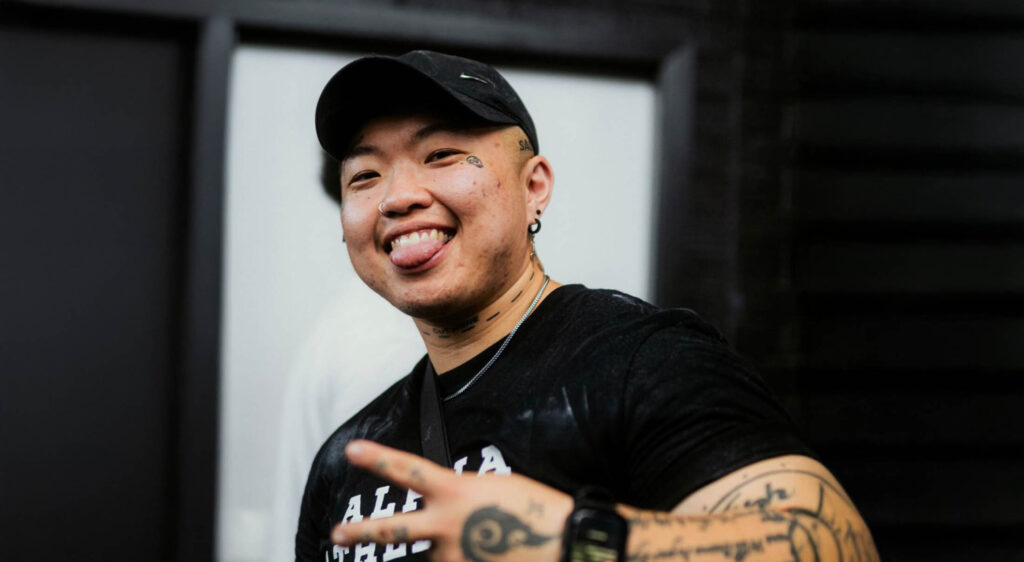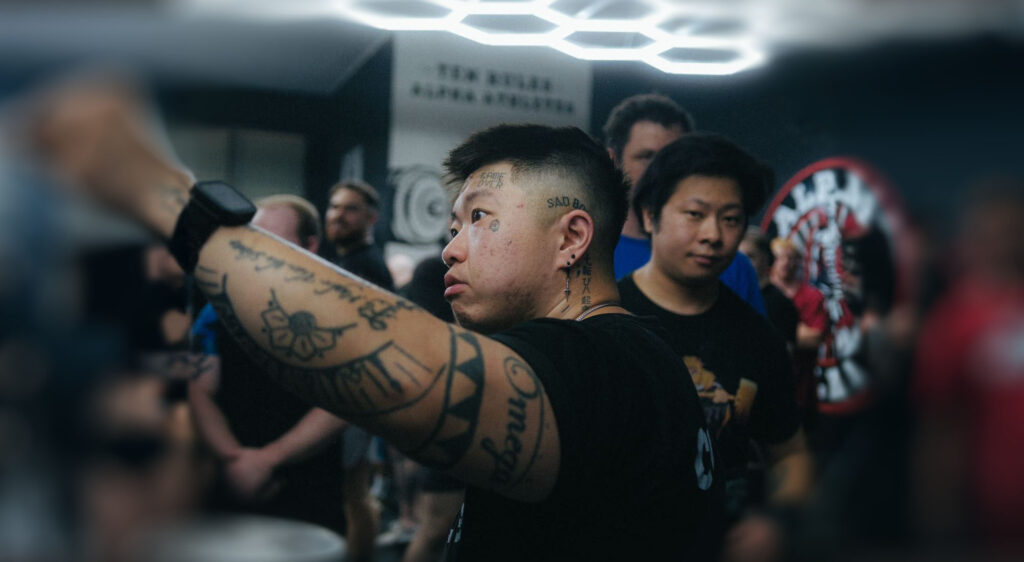We chatted with trans powerlifter and coach Tats the Strength Senpai about getting started at the gym, overcoming gym anxiety and workout tips for trans and queer guys.
Is there anything people should know before they start at the gym?
You’re going to learn a lot of things along the way. The most important thing is taking that first step into a gym. From there, you can figure out how things work and what your goals are.
How do you overcome gym anxiety?
Your first visit is going to be a little scary. Gym anxiety is very normal. Even as a competitive athlete and a coach, when I enter a new gym, I still get a little bit of gym anxiety.
“Have you ever done a hard run or swim? Do you remember what you were thinking? Probably not, because in that moment, you’re just trying to get through it.”
Most people in the gym are doing the same – they’re not looking at you but focusing on their own workout.
Any tips for trans and queer guys?
If you’re anxious about the gym because of its masculine energy, I assure you that most gyms have become more inclusive and safer for clients and have heavy anti-discrimination rules.
Another tip to combat gym anxiety would be to find some queer gym buddies to train with. It’s helpful for motivation and can be pretty funny, especially when you’re figuring out how things work together.
What do you need to bring to the gym?
- Water bottle
- Towel
- Headphones and a good playlist
- Change of clothes – I once had my shorts rip during a squat, so it’s best to come prepared!
Is there a gym etiquette starters should know about?
Usually, when someone has a bottle or towel down on a machine, they’re using it. You’re welcome to ask, ‘How many sets do you have left?’ or ‘Is it okay if I work in?’.
Also, look out for cameras and tripods as clients often film their sets for their coaches or social media. It’s best not to walk in front of someone doing a heavy set, as it can be distracting.
Please wipe down your machinery after you’re finished.

Many people make resolutions to get fit or join a gym. What goals should they set to stick to gym training?
My biggest advice is to use SMART goals — goals that are Specific, Measurable, Achievable, Realistic, and Timely. When you have these, you can start making small steps toward your big aspirations.
For instance, if a trans man wants to get big and strong, the small steps may include:
- Visiting a gym
- Checking out the equipment and workouts
- Looking at transmasc bodybuilding journeys online
- Asking for help – staff at the gym are very helpful
After you’ve been going to the gym for a while and you’re in a good routine, you may want to figure out what type of training you want to do. Resistance training is a good place to start, which includes weights, machines and body weight exercises.
Depending on your goals, you can also add other forms of training to your routine. If you’re focusing on strength, you can do more strength training. If you want to build muscle, I recommend hypertrophy training. Getting a coach can also help you determine the best program for your goals.
How important is diet in training?
Nutrition is vital. The body can’t function without carbs, fats and protein. When you eat right, you’ll see much better results in your training. It can also make you feel more energised and focused in your day-to-day life.
“80% of gains are made in the kitchen.”
Here are my nutrition tips for beginners:
- Meals – have at least three balanced meals a day; breakfast is important
- Protein – make sure you’re getting a good amount of protein
- Fibre – eat lots of raw fruit and veggies (which is also helpful for your sexual health!)
- Hydration – drink 2L of water a day
- Sleep – a good sleep schedule will help with muscle recovery
Once you’re further along in your fitness journey, you can look into more detailed nutrition, such as calories and macros.
What are some important things to consider when starting to train as a transmasc person?
For trans guys, if you are on testosterone, it can affect your joints. I recommend using lighter weights and going for slower, controlled (also called eccentric) movements to strengthen your tendons and ligaments.
Wearing a binder is up to you and what you’re comfortable with. I personally chose sports bras over binders because they didn’t restrict my movements as much.
You can wear any clothing to work out. Loose clothing is best for mobility, so I wouldn’t recommend pants like skinny jeans. Flat-soled shoes like Vans or Converse are better for stability, especially on leg day.
You recently had top surgery; how was your recovery, and what did you learn about training during it?
I discovered a lot of misinformation saying that you shouldn’t be moving until six to eight weeks. It’s been five weeks for me; I’ve gotten all my mobility back, I’m back to running and training, and my scars have healed beautifully. I am fortunate to have had some great physical therapists who helped my recovery. I recommend Fascial Stretch Therapy (movement-based massage to help with scar tissue and pain after surgery); it restored much of my mobility.
Walking is a great way to regain your conditioning — even starting with a five-minute stroll. With weights, it’s best to start very light. Don’t be too worried about losing muscle mass. For trans folk on testosterone, you will likely maintain muscle. And if you’re not on T, try not to stress; you’ll get it back in no time.
I’ve written an e-book that guides readers through my rehabilitation process and includes a training program for other transmasc folk to get the aftercare they need. You can download for free here.

You run a fundraising event called ‘Deadlift for Diversity’ — when’s the next one?
Our next ‘Deadlift for Diversity’ is on May 11, 2025. It’s a non-profit fundraiser for one community member’s gender-affirming surgery. Using a deadlift bar, everyone gets three attempts on any weight. It’s open to trans people, queer folk and allies.
Is there anything you’d like to share with readers about making gyms more inclusive?
“We’re all just people; we are all trying to improve our health, and that’s a common goal we share.”
Through this mutual understanding and respect, we can make these spaces safer and more welcoming for everyone.
Thanks for chatting with us, Tats! You can follow Tats’ journey on Instagram at @strengthsenpai_
Want to know more about food and fitness for gay, bi+ and trans guys? Check out our other content on the topic:
Editors note: This interview has been edited for length and clarity.